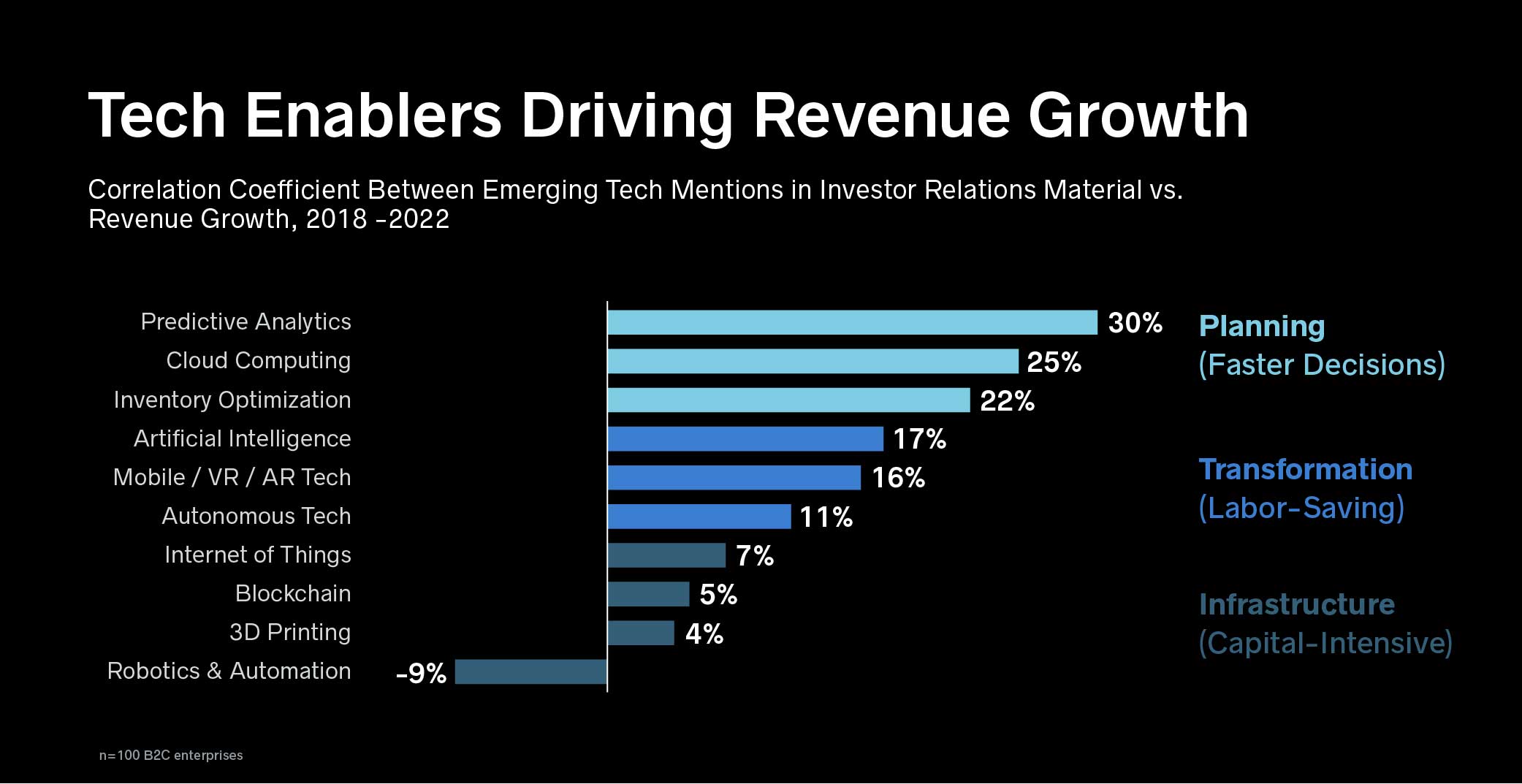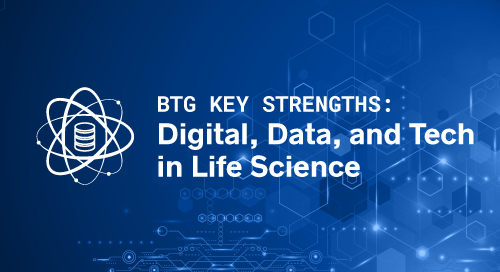
Integrated business planning (IBP) initiatives have accelerated in the wake of COVID-19 as senior executives cross-sector come to recognize that heightened economic and geopolitical volatility is here to stay. While not a new concept or trend, IBP is quickly becoming mission critical among savvy leaders who see it as the compass in the storm.
Why?
IBP at its core is a choreographing engine—tying together the right people, information, and insights at precisely the right time, in service of a more adaptive, intelligent response to cross-functional risk and opportunity.
To get the latest insights on IBP—with a particular focus on the consumer and retail industries—we’ve turned to Steve Hochman, a former Bain & Company and Abt Associates consultant who also held senior leadership roles including CEO, COO, and VP at several highly successful startups and the Nike Corporation, where he led global supply chain strategy and oversaw two major global planning transformations. Hochman advises clients cross-sector in supply chain strategy, end-to-end planning, and supply chain transformation.
Meet The Expert

Steve Hochman
Steve Hochman is the VP of Research & Advisory at Zero100, Inc. a boutique supply chain think tank that helps Fortune 500 C-level executives accelerate operations innovation and transformation at scale.
What is the main goal of an integrated business plan? How does a successful IBP strategy help align high-level goals with day-to-day operations?
Integrated business planning is a process that continuously aligns targets, assumptions, and plans across all key players in a company to assure more reliable achievement of business plans and brand objectives. In plain English, it’s a way to get everyone on the same page, fast, and execute.
IBP emerged in the early 2000s because of a very practical problem: The more they grow, the more companies become functionally specialized. Particularly when the competition for talent heats up, specialization is necessary to achieve high degrees of competence and pool scarce skills. The problem is that specialization leads to silos. Over time, processes, information systems, incentives, and even team subcultures grow apart, as do their operating plans. Supply chain may see a factory constraint or an inventory risk, but sales teams are told to just keep on selling. Or, operations and sales are aligned, but neither is aligned to the budgets created by finance. And so on.
Fast forward to 2020, and you now have the added challenge of what statisticians called “randomness:” The idea that all plans to some extent are wrong because unforeseeable game-changing world events are now part of the fabric of everyone’s global operating environment. Anyone experiencing the effects of a pandemic, a post-pandemic business rebound, 50% fuel price hikes due to a war in Ukraine, an escalating US-China cold war, intensifying consumer expectations around greenhouse gas transparency, inflation that outlived every economist’s forecast, persistent labor shortages, and now revolutions in artificial intelligence that may change the nature of work itself, will know what I’m talking about.
So, having every executive on the same page is no longer a nice-to-have, it’s survival. Enter IBP.
How does IBP differ from traditional planning processes, such as Sales and Operations Planning (S&OP) or Demand Planning? What does the timeline look like for a company who decides to move from S&OP to IBP?
IBP is a natural evolution from earlier versions of planning. Way back in the 1990s, “planning” often just meant getting the orders entered properly ahead of a factory production run. All you needed was a smart analyst to key in the forecast, plus or minus maybe 20% to allow for an order cancellation or two.
S&OP emerged because, as companies grew in scale and complexity, increasingly specialized Operations and Sales functions started to feed factories different demand signals, and chaos ensued. Conversely, S&OP pioneers like Honeywell, Procter & Gamble, and Intel realized that bringing teams together with a more choreographed plan alignment process could be a source of competitive advantage. And it was. Tens of billions of dollars in shareholder value accrued to companies who brought in the top-down, cross-functional plan choreography that we now call S&OP.
The gap that remained was Finance. Particularly amongst larger companies with high degrees of business complexity, it made no sense to align sales and operations plans (often stated in units) if those plans didn’t also connect back to budgets (i.e. dollars). CFOs and divisional GMs at companies like Samsung and Nike recognized that so-called “unit-dollar translation,” while hard, was mission critical. And in many cases, those same companies invested millions of dollars in multi-year integrated planning transformations to ensure it. And thus IBP was born. No longer a supply chain process, among leaders IBP had become part of the business and systems core.
Learn more: Supply Chain Planning Gets a Post-Pandemic Makeover – Zero Percent Carbon, 100% Digital (zero100.com)
What are the key components of integrated business planning? What are the benefits of having a separate IBP division?
Integrated business planning takes existing supply, demand, commercial, product, and financial planning processes within a company and connects them. When done well, IBP is connective tissue rather than its own separate thing.
The only add-on is 1) the executive meeting that assures cross-functional alignment, and 2) the “pre-IBP” coordination that assure C-level executives are equipped to act on the hard tradeoffs of the hour.
When done right, IBP meetings are exception-based, meaning they are proactive escalations of the vital few risks and opportunities facing the business at that moment in time. And they are, crucially, decision-based. They are not about reporting the news. They are about confronting risk and opportunity, surfacing real bets and options, and making decisions that stick.
I was advising one global fashion brand recently who said culture change is actually what’s most challenging: In many companies, executive reviews are performative – focused on showcasing excellence. IBP is different. While certainly making room for celebration, the express goal is to put the ugly (or sometimes beautiful) truth on the table and confront it so that the company can move with more agility and confidence through the inevitable turbulence ahead.
The masters of IBP understand the value of this pre-IBP meta-capability and do a ton of legwork prior to the meeting itself to assure that one hour spent with all C-suite executives is set up for action.
What IBP practices are easiest for a supply chain leader to implement when beginning to take steps towards IBP excellence?
We often say the best thing to do when taking on an IBP transformation is to just get started. Bring C-level executives into the process and make them part of it. Put executive review meeting #1 on the calendar 60 days out and work towards it. Don’t overanalyze your plan alignment process. Identify the gaps by doing. Then improve.
For that first meeting: What are the big risks you face next quarter? What questions are crucial to answer to align plans against those risks? Is it a demand-side risk? A question on product assortment or pricing strategy? An emerging inventory bubble? Chances are, you know what the big issues are facing the business. The only thing missing is putting it on the table.
Behind the scenes, you can define the longer timeframe, more architectural work of systems, process, and cultural transformation. But get started. Add value now with the information and processes you have. Most IBP leaders get immense value from the associated momentum.
How can IBP help identify opportunities and risk amid uncertainty? How can supply chain leaders properly assess their processes and determine pain points?
IBP is tailor-made to identify risk and opportunity. By establishing a cadence by which we proactively bring plans together and see where assumptions are misaligned, IBP leaders develop a magical capability to surface business gaps sooner. Sometimes those gaps represent upside—untapped revenue, margin, or brand goodwill. Other times gaps really do equal risk. Either way, the continuous nature of plan alignment itself allows companies to move months faster.
The IBP lead at a $50B global diversified technology brand told me her company saves at least 6-12 months on key plan tradeoffs vs. conventional serial planning processes. And that time savings in turn is worth billions of dollars in recaptured growth and margin each year.
Knowing that IBP is not simply a supply chain planning process upgrade, how can leaders get stakeholders across the org aligned and involved?
Great question. It’s a bit of cliché to say large scale transformations require active executive sponsorship. But they really do. The more cross-functional the nature of the initiative, the greater that maxim holds true.
The first step in many IBP transformation initiatives is a Board of Directors’ presentation to educate on the “what and why” of IBP, with specific asks for help. Those presentations are often followed with carefully scripted roadshows to assure all C-level executives and their teams are clear.
IBP leaders will even go so far as to script out role descriptions for C-level executives ahead of that first experimental IBP meeting, training “upwards” to help each executive understand what they need to do to be successful. Beyond explaining “what’s in it for the boss,” IBP leaders need to explain what behaviors are required to deliver IBP value.
Another maxim is to say, “we’re all in sales.” With IBP, that’s absolutely the case. Supply chain or finance leaders who take on the IBP mantle need to develop a core competency not just in operational excellence, but in storytelling. At Zero100, we spend a lot of our energy helping executives with the latter. And it is always time well spent.
And of course, it helps if the storyteller themselves already has trust with the C-level stakeholders involved. Pick leadership talent wisely in this regard. Whether through finance, operations, or other prior experience, having a track record of adding business value is essential to opening the door to any uncertain change.
How can leaders ensure successful and effective integrated business plans? What are the best ways to measure and track related metrics, and how can they best be integrated into existing business processes?
The best way to know an IBP process is successful is if it delivers better decisions faster. Per the IBP leader at the technology company mentioned earlier, “time to decision” is the ultimate metric. The meta-metric flows from that initial indicator. For example, if I decided to liquidate excess inventory 6 months faster, how did that benefit the firm? Chances are, it led to a cleaner marketplace, more cash, and higher margins.
Companies that implement IBP wisely will often instrument their process with a logging mechanism, asking simply: “What would have happened if I had waited 6 months on this decision? How would the financials or the health of the brand have been different? What was the opportunity cost that we avoided by bringing the gap and the debate to a head sooner?” Usually that rough cut analysis is enough to prove to ourselves the huge IBP-led value accrued to the bottom line.
How can leaders ensure these plans and processes are sustainable and able to be maintained?
There are different ways to sustain momentum and operate IBP at progressively greater scale. The most important is generally organizational: IBP leaders will often create a planning “Center of Excellence (CoE)” or equivalent hub to drive continuous improvement and scale-up. Applying dedicated resources ensures organizational focus and signals to the organization that you are putting your money where your mouth is. In short, you want the horsepower in place to drive focus and trust.
Per above, the other signaling device is picking your strongest leaders to drive the change. If IBP is genuinely important to you, you’ll put your A-team on the case. Not only will that A-team have the necessary street cred at the top of the org chart, they’ll also be talent magnets for any long term change you want to drive at scale.
The other scale-driver of course is information systems. While quick process experiments are a great way to generate quick early wins, it’s pivotal to embed a technology swim lane in your transformation roadmap. Much can be achieved with spreadsheets in the first 90 days. After six months, you’ll want to have a robust plan for how you’ll integrate data to automate your IBP plan alignment processes. And you’ll want to have a forward-looking view of the technology landscape to harness fast-evolving capabilities like artificial intelligence, machine learning, and simulation through digital twins. Having a strong digital visionary embedded in your IBP initiative will be paramount.

How can consumer goods companies create sustainable success and properly create a roadmap of actionable items?
Whether consumer goods or otherwise, the principles are the same.
The only additional item to consider is non-competitive peer conversations to learn from the wins and mistakes of others. A great way to accelerate learning is to plug into communities of practice that are cross-sector, e.g. a consumer goods company may learn more from a consumer electronics company than one of its direct competitors.
It’s partly why we complement our research with a lot of peer events for C-level supply chain practitioners. It’s about advancing the collective.
Where should IBP leaders be focusing right now? What advice do you have for them?
If I could give just one piece of advice, it would be to work back from 5 years out. Deliver rapid value because you need it for momentum. But technology is advancing too fast to leave your long-term technology and associated talent roadmap to chance. And it’s not just the fancy stuff like artificial intelligence you should track. It’s also newer cloud-based data architectures and master data management services that will fundamentally streamline and accelerate the way an IBP process will function. If you limit yourself to a 1- to 3-year vision, you may lock yourself into legacy architectures that block you from real step-function IBP advantage. You want to be the nimble one. That means careful tracking of digital trends. You may not implement all the cutting-edge tools all at once, but you want an architecture that allows you to pivot as new tools emerge. And equally important, you want to build internal skillsets to be able to digest and capitalize on the exceptional technical capabilities that are just around the corner. Deliver value now but be ready for what’s to come.
Learn more: Digital Twins Break Into the Boardroom – Zero Percent Carbon, 100% Digital (zero100.com)
Get the IBP expertise you need to succeed.
There are a lot of ways IBP experts can support your goals this year. Among them, identifying and building upon existing processes, identifying opportunities for improvement and growth, creating roadmaps for success, and providing insight on relevant current events and models. Independent talent are essential assets for companies looking to optimize and standardize supply chain and business processes in all industries thanks to their in-demand skills and niche expertise.
Reach out today to secure insights from Steve Hochman or start a project with another highly skilled independent consultant from Business Talent Group.
GET THE SKILLS YOU NEED
Thousands of independent consultants, subject matter experts, project managers, and interim executives are ready to help address your biggest business opportunities.













